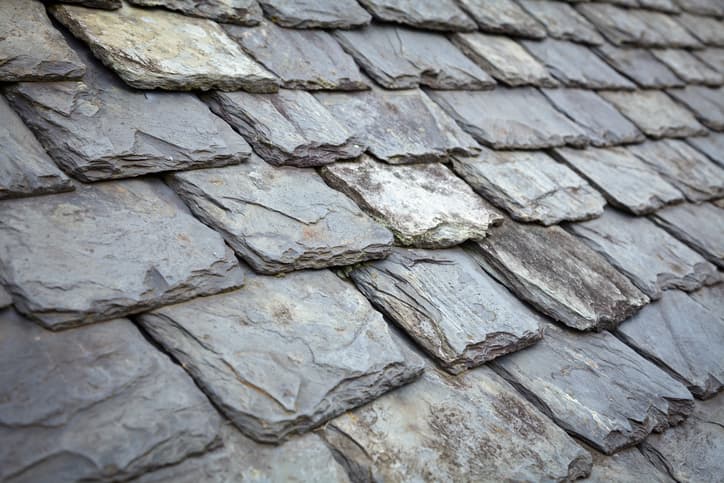Slate roof installation: Techniques for durability and value
 Slate roofs are some of the nicest and longest lasting roofing options available to homeowners. While slate roofs can be pricier than other materials, they can last as long as 100-150 years, making it well worth the upfront cost
Slate roofs are some of the nicest and longest lasting roofing options available to homeowners. While slate roofs can be pricier than other materials, they can last as long as 100-150 years, making it well worth the upfront cost
However, slate roofs are one of the most complicated roofing systems to install. And, if installed incorrectly, slate roofs will last only a couple years. That’s why you need to be careful when you’re selecting a roofing contractor for your synthetic slate or authentic slate roof.
Here are a couple things your roofing contractor should know about slate roof installation:
- Roof deck and underlayment
Using the proper type of wood for the roof deck is key to a long-lasting synthetic slate or authentic slate roof installation. Ideally, you should only use 3/4- to 1 ½-inch thick rough or kiln-dried lumber board that will last for at least the next 150 years. Better yet, use a roof deck that will be good for the next 300 years. Never use plywood or particle board, as it will reduce the usable life of your slate roof.If slate is properly installed, it will be watertight on its own and does not require underlayment. As such, your roofing contractor should not rely on underlayment for water- or wind-proofing, but may use underlayment to cushion the slate during installation and as a surface on which to draw course—or slate row—lines. - Headlap and aligning courses correctly
A good way to determine whether a slate roof installation was performed correctly is to look at the ”headlap.” Slate roofs are installed in ”courses,” or rows. The bottom of one course should overlap the top of the slate two courses below by at least 3 inches, ideally, but never less than 2. Headlap is what keeps water from penetrating your synthetic slate or authentic slate roof. Depending on the pitch—or slope—of your roof, you might need more or less headlap. Low pitch roofs, for instance, need more headlap because water rolls more slowly off than it would on a steeper sloped roof.In order to achieve the correct amount of headlap, your roofing contractor will likely draw out all courses in red chalk on the underlayment. Measuring out courses beforehand ensures precision and accuracy throughout the whole slate roof installation process. - Valleys, ridges and flashings
Simply ensuring the correct amount of headlap isn’t enough. For a completely waterproof slate roof, you’ll need to make sure all the seams are sealed. If you have a dormer on your roof, then your roofing contractor will need to install flashing around the edges. It’s the same for valleys—the low points of your roof—and ridges—the high points of your roof. There are many different options for flashings and ridgecaps. If, for instance, your roofing contractor is using copper flashings, they might use about 20 oz. copper for valleys and 16 oz. for ridges and flashings. - Choosing the installation materials
If you can, avoid ordering foreign slate boards. American standard slate boards come with indented nail holes, which allow the nail to be tight against the slate it’s securing without putting undue pressure against the overlapped boards. As far as materials are concerned, copper and stainless steel nails are typically the best for securing slate roofs.ASTM, a reputable third-party standards organization, has developed a series of tests by which they measure the quality and predicted durability of slate used for roofing applications. Their standard for slate—ASTM C406—categorizes slate into three categories: S1, S2 and S3. To ensure your roof lasts long into the future and to be sure of the weatherproofing qualities of your slate, make sure your contractor uses only S1 grade slate.
There is so much to consider when conducting a slate roof installation—that’s why you need to choose a roofing contractor that has experience with slate roofs. At Wildwood Roofing & Construction, we’ve been repairing, maintaining and installing slate roofs for years. We know a thing or two about slate roof installation—from what kind of nails are best to the best manufacturers for every price range. Plus, we use only S1 grade slate boards.
If you’re thinking about installing a slate roof, give us a call. We’ll talk you through your options and offer you a cost- and obligation-free estimate.


